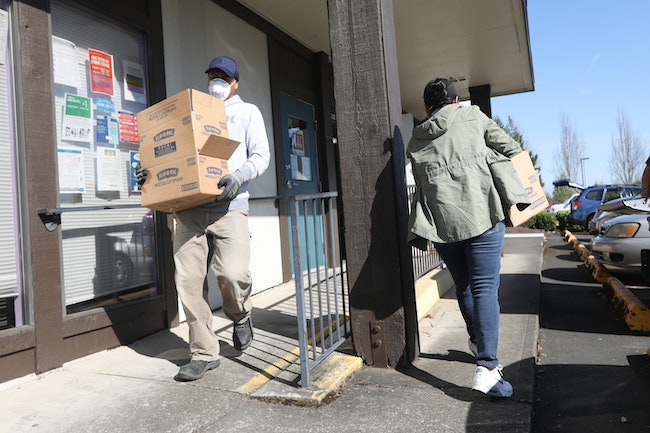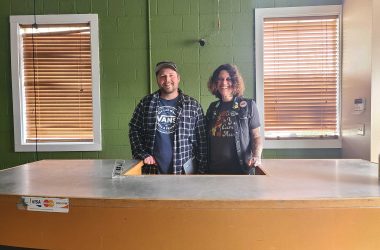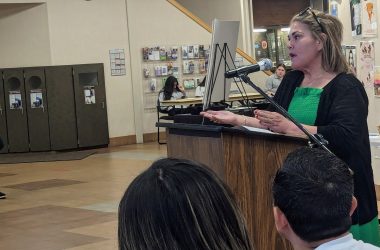
Volunteer Yoni Giron takes a load of food boxes to his car at the Marion County food pantry on Friday, April 10. (Amanda Loman/Salem Reporter)
Women, who have been disproportionately impacted by the pandemic, are the main driver behind calls to a social services hotline locally that connects people to community resources.
Data from the last year shows three quarters of all contacts to the 211 line in Marion County were women.
211 is a help line that people can call, email or visit the website of to find resources like rental assistance, job training or disaster help.
State economist Josh Lehner explained in a blog post Thursday how the pandemic-induced downturn has disproportionately affected women who have been more likely to face layoffs.
“These Oregon parents likely face the direct trade off of going to work, or staying home to take care of the kids, or trying to arrange childcare which is restricted by the pandemic and hard to find and afford to begin with,” he wrote.
Lehner said that one in five Oregonians in the workforce have children, work in a job that cannot be done from home and don’t have another non-working parent in the household.
He acknowledged that women end up taking on more family and household responsibilities than men. Nationally, moms have seen much larger job losses than dads, he pointed out.
“In fact, nearly 1 million moms have left the labor force in the past year, twice that of dads. In Oregon that’s the equivalent of around 12,000 mothers leaving the labor force,” Lehner wrote in his post.
Data shows Marion County residents contacted the 211 resource 21,569 times from January 2020 to January 2021, whether through calling, emailing or visiting the website.
Through that, 28,446 needs were identified. The largest needs were for healthcare at 27%, housing at 23% and utility assistance at 11%.
In Marion County, 211 operators helped connect 1,525 people with rental assistance, 1,457 people with electric payment assistance and 1,021 with food stamps.
Cara Kangas, director of partnerships at 221, said when the help line began its Covid response it stopped asking all the demographic questions in order to quickly respond to the increased demand. As a result, the demographic data may not be complete, she said.
In Marion County more than half of all callers were white, a quarter were Hispanic or Latino, 7% were Black and 3% were either Pacific Islander, American Indian or Middle Eastern/Western European.
People experiencing homelessness represented 1,452 contacts.
In Polk County there were 2,972 contacts and 3,873 identified needs from those.
The main needs were healthcare at 30%, housing at 19%, food and meals at 10%.
The 211 line was able to connect 822 people in Polk County to healthcare, 511 to housing and 287 to food.
Most callers in Polk County were white, 10% were Hispanic or Latino, 6% were Black or American Indian.
More than 50 contacts in Polk were from people experiencing homelessness.
Have a tip? Contact reporter Saphara Harrell at 503-549-6250, [email protected].
WE GET SALEM THE FACTS. Covering your community with care and depth. Salem Reporter – fair, accurate, independent. Subscribe and support our essential local service.













